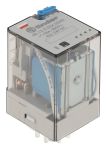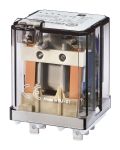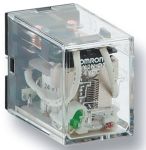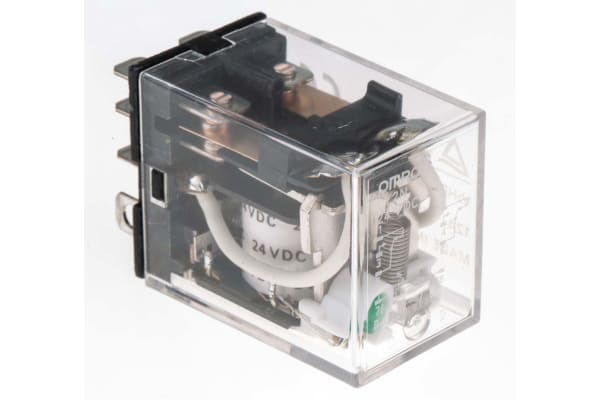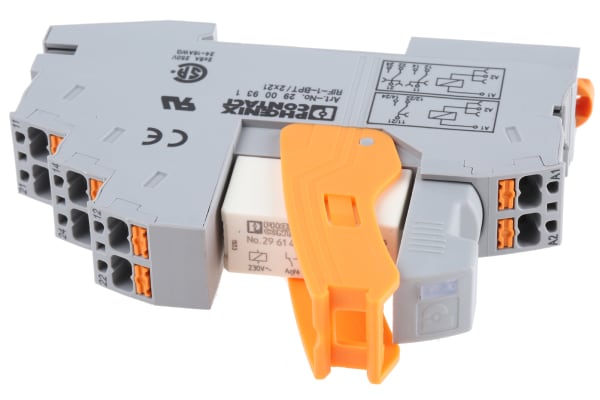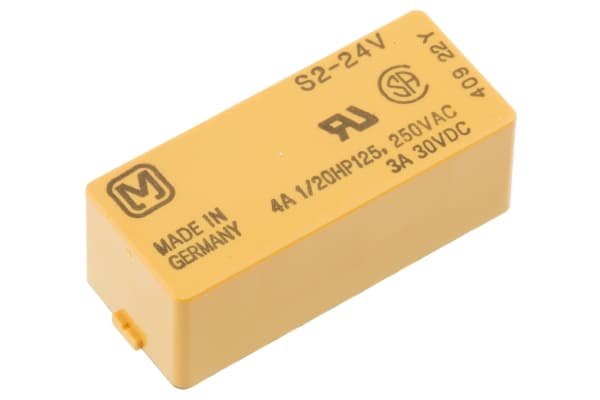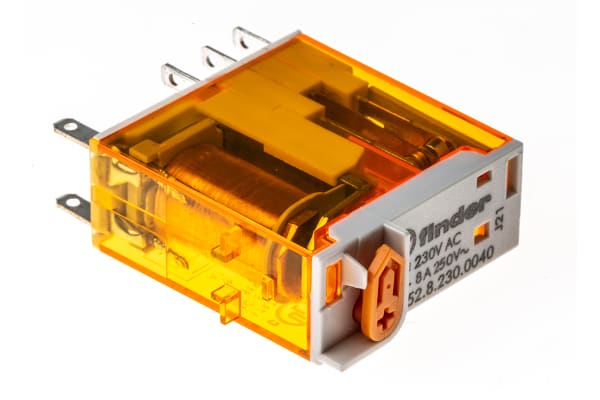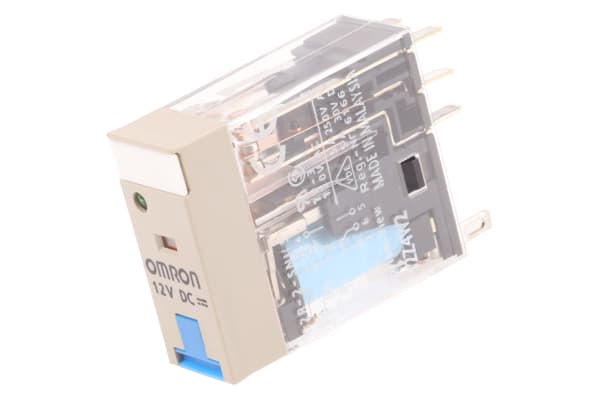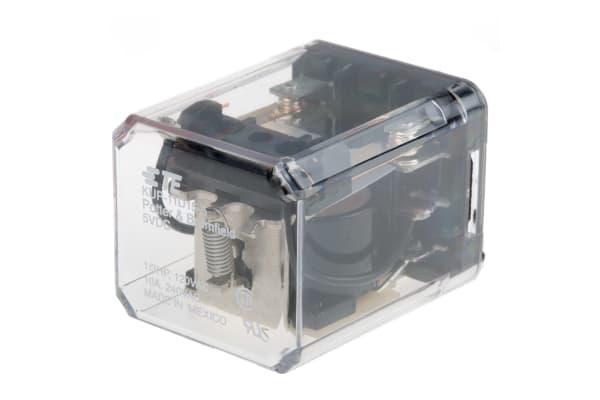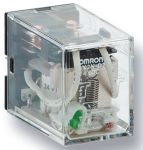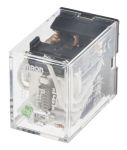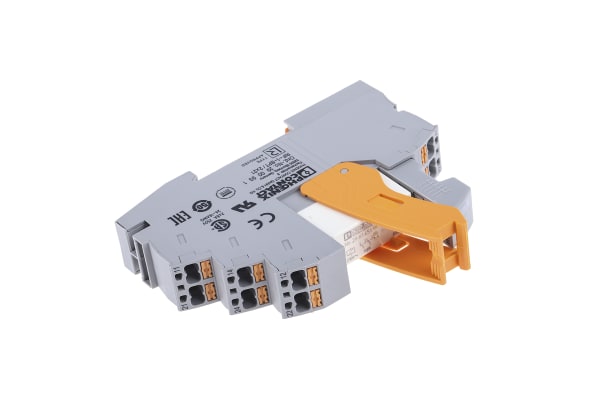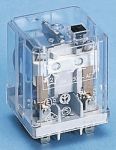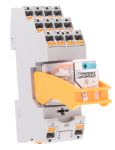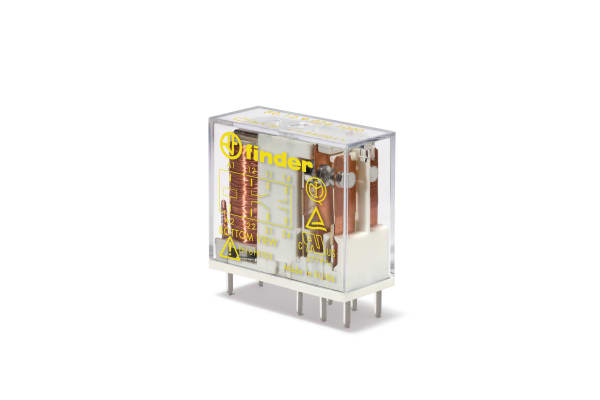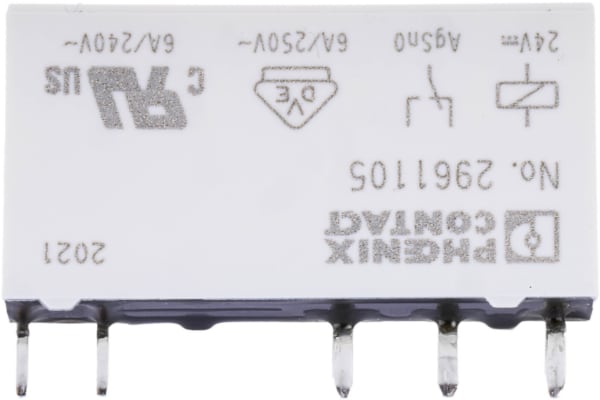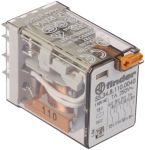Non-Latching Relays
Relays are electrical switches that are operated by electrical impulses with the primary function to open and close a circuit, they can also be referred to as industrial switches. There are 2 main types available, latching and non–latching relays.How do non-latching relays work?Non-latching relays are in a normally closed (NC) position and will stay in this state without power. When power passes through the circuit, the relay switched to a normally open (NO) position by using an internal coil to generate a magnetic force, holding this NO position. Once the current is turned off, it returns to the NC position. This makes non-latching relays well suited to push-button applications like keyboards and micro-controller input buttons.What are non-latching relays used for?Non-latching relays are highly durable and versatile components, making their performance long lasting and suitable for use in a wide range of applications, such as:Automotive enginesHousehold appliancesIndustrial machineryMedical equipmentTelecommunications equipmentWhat is the difference between latching and non-latching relays?Both types of relays in similar in design and function, however, a significant difference between them is that a latching relay will remain in the last position it when it was last powered, whereas a non-latching goes back to its normal position. This makes each more type of relay suitable for different applications. Considerations when selecting a relayWhen choosing a relay, it is important to consider a number of specifications to ensure it is fit for purpose, some factors include:Coil voltage – the required voltage to actuate the switching mechanism. If a voltage is too high this could damage the components, if it is too low then it will not actuate. Contact configuration – This is the state the contacts are in without power. For example SPST, single pole single throw.Contact material – the relay contacts are available in many materials that have certain properties. Common materials are gold, silver, tin oxide and nickel Coil power – the amount of power (watts) the coil operates at. This must match the power in the circuit for correct function. Coil resistance – the amount of resistance (ohms) in the circuit that the coil creates.
-
Finder, 24V dc Coil Non-Latching Relay DPDT, 10A Switching Current Plug In, 2 Pole, 60.12.9.024.0040
IDR253,099.57 -
Finder, 24V dc Coil Non-Latching Relay DPDT Plug In, 2 Pole, 62.32.9.024.0040
IDR306,698.36 -
Omron, 12V dc Coil Non-Latching Relay DPDT, 10A Switching Current Plug In, 2 Pole, LY2N-DC12
IDR230,023.77 -
Omron, 24V dc Coil Non-Latching Relay DPDT, 10A Switching Current Plug In, 2 Pole, LY2N-DC24
IDR249,847.98 -
Phoenix Contact, 230V ac Coil Non-Latching Relay SPDT, 10mA Switching Current DIN Rail Single Pole, 2903339
IDR204,325.72 -
Finder, 230V ac Coil Non-Latching Relay 4PDT, 12A Switching Current Plug In, 4 Pole, 56.34.8.230.0040
IDR451,446.56 -
Finder, 230V ac Coil Non-Latching Relay 3P-NO, 16A Switching Current Plug In, 3 Pole, 62.83.8.230.0300
IDR249,743.09 -
Panasonic, 24V dc Coil Non-Latching Relay DPDT, 8.4mA Switching Current PCB Mount, 2 Pole, S2-DC24V
IDR224,569.49 -
Finder, 230V ac Coil Non-Latching Relay DPDT, 8A Switching Current Plug In, 2 Pole, 46.52.8.230.0054
IDR263,483.68 -
Finder, 230V ac Coil Non-Latching Relay DPDT, 8A Switching Current Plug In, 2 Pole, 46.52.8.230.0040
IDR233,694.92 -
Omron, 12V dc Coil Non-Latching Relay DPDT, 5A Switching Current PCB Mount, 2 Pole, G2R2SNIDC12(S)
IDR172,229.38 -
TE Connectivity, 5V dc Coil Non-Latching Relay DPDT, 10A Switching Current Plug In, 2 Pole, KUP-11D15-5
IDR280,056.30 -
Finder, 24V ac Coil Non-Latching Relay 3PDT, 10A Switching Current Plug In, 3 Pole, 60.13.8.024.0040
IDR266,315.71 -
Omron, 24V dc Coil Non-Latching Relay DPDT, 10A Switching Current Plug In, 2 Pole, LY2I4N DC24
IDR226,352.62 -
Omron, 24V dc Coil Non-Latching Relay 3PDT, 5A Switching Current Plug In, 3 Pole, MY3N-DC24
IDR264,113.02 -
Omron, 110V ac Coil Non-Latching Relay DPDT, 5A Switching Current Plug In, 2 Pole, G2R-2-SN 110AC(S)
IDR262,120.11 -
Phoenix Contact, 230V ac Coil Non-Latching Relay DPDT, 8A Switching Current DIN Rail, 2 Pole, 2903331
IDR252,575.12 -
Finder, 24V ac Coil Non-Latching Relay 3PDT, 16A Switching Current Plug In, 3 Pole, 62.33.8.024.0040
IDR320,543.84 -
Phoenix Contact, 24V dc Coil Non-Latching Relay 4PDT, 5mA Switching Current DIN Rail, 4 Pole, 2903308
IDR232,436.24 -
Finder 48V dc Safety Relay - Dual Channel With 2 Safety Contacts , 0 Auxiliary Contact
IDR300,404.96 -
Phoenix Contact, 24V dc Coil Non-Latching Relay SPDT, 10mA Switching Current PCB Mount Single Pole, 2961105
IDR271,035.76 -
Finder, 110V ac Coil Non-Latching Relay 4PDT, 7A Switching Current Plug In, 4 Pole, 55.34.8.110.0040
IDR282,993.22 -
RS PRO, 240V ac Coil Non-Latching Relay 4PDT, 12A Switching Current Plug In, 4 Pole
IDR247,435.51 -
Finder, 24V dc Coil Non-Latching Relay 3PDT, 10A Switching Current Plug In, 3 Pole, 55.33.9.024.0010
IDR181,249.92



